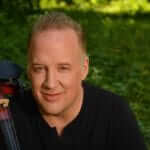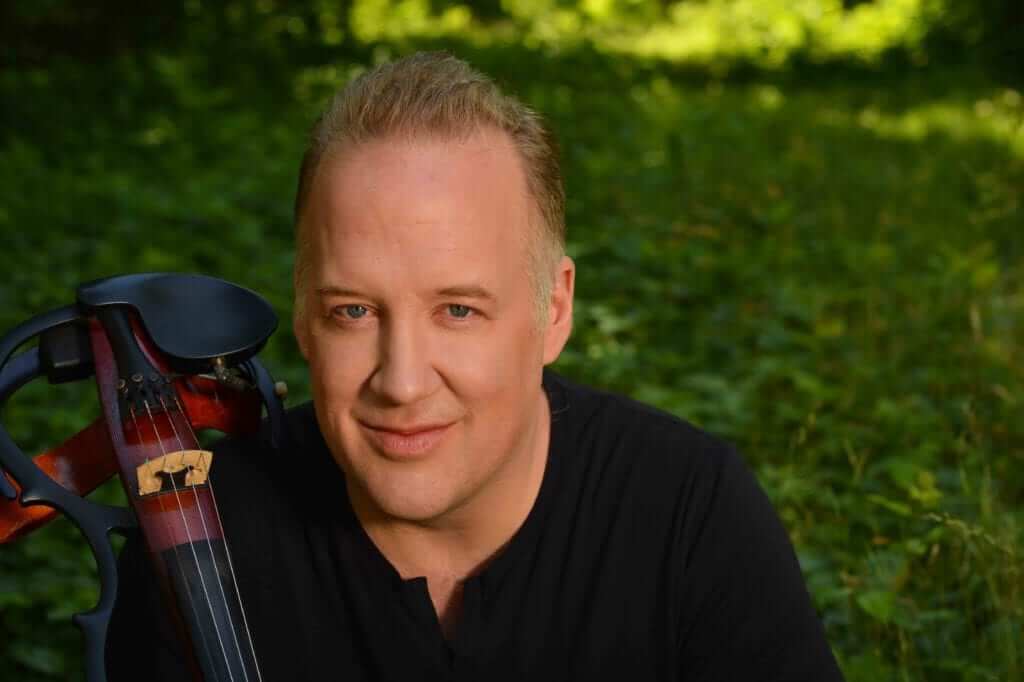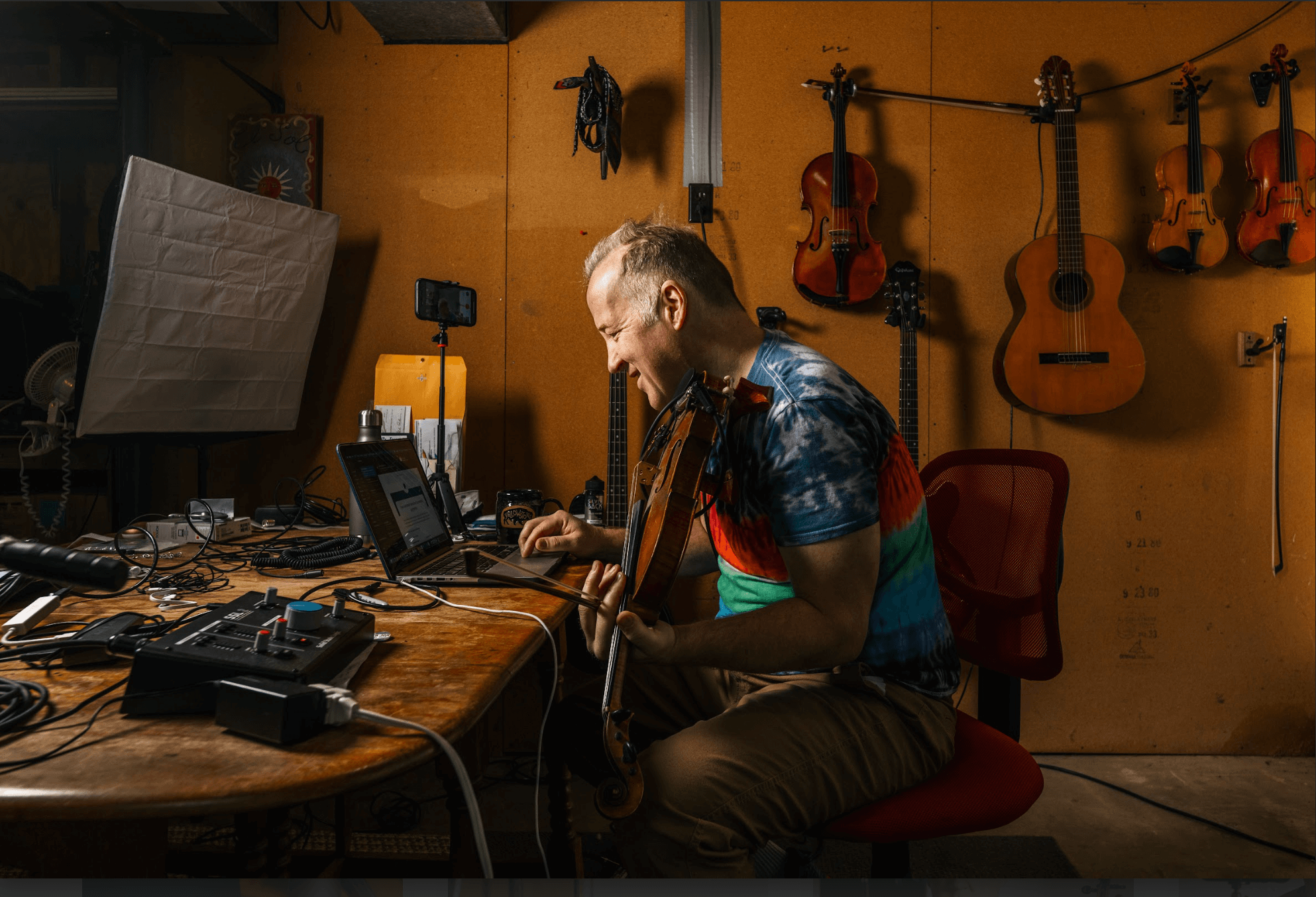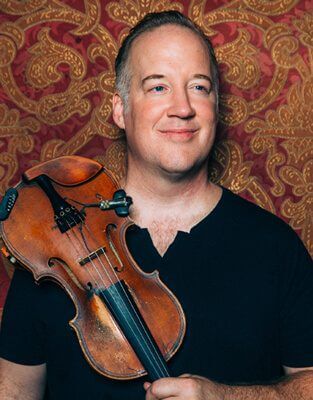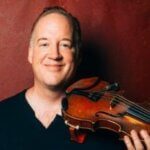Table of Contents
I’m interested in how personal development and musical practice overlap for musicians.
For example, most musicians pick a “lane”, identifying primarily as performers, composers, or teachers. To keep growing after they’ve peaked, they might benefit from stepping outside that lane.
That’s when they’re likely to strike a nerve.
Not that anyone needs to master every skill outside of their comfort zone. Most will still likely identify primarily as a composer, performer, or teacher. But many people rediscover themselves by taking on continuing education outside their specialty.
I identified as a classical performer early on, and I’ve struggled to overcome resistance to both composing and teaching. I see this struggle as connected to my personal development, because it’s caused me to question myself in deeper ways beyond my skill set.
When you consider yourself expert at one facet of music, the willingness to be a novice in another creates vulnerability. It’s in that space, where you’re looking at your own limits through a different lens, that there’s room for growth.
Disclaimer- I’m not a psychologist:)
Composing and improvising triggers fears and questions for me related to self worth such as:
-What does it look like when I compose (or act) in an authentic way?
-Are my ideas (or compositions) worthwhile?
-Do people resonate with me/my writing, or will they reject me/it?
-Do I have anything unique to offer/say?
In other words, the self-doubt that can come to mind when composing or improvising is somehow like a mirror or echo of personal self-doubt. And again, this is why I suspect that it’s useful for me to compose, because working through that judgement in a healthy way as a musician can help me deal with it better on a personal level.
Similarly, developing a deeper appreciation for teaching has humbled me. In fact, the more schools I visit (about 50 per year ), the more I’m in awe of teachers.
Teaching is in part analogous to being a therapist, mentor, friend… It’s partly about how we show up in relationships to others.
I recently learned more about this from music therapist Raquel Ravaglioli, who suggests that to be a better teacher, one can utilize tools from the therapist’s toolbox, including monitoring self-awareness, counter transference, transparency, and various other tricks of the trade.
Over time I’ve found that a good teacher is always learning from their students, as opposed to constantly yelling, “do it this way”…
Instead of getting upset when people don’t adopt my ideas, I’ve accepted that it’s “on me” to better educate or advocate for how and why they can go about taking those ideas on. As I write this I’m eerily reminded of advice from counselors related to taking responsibility instead of blaming other people for whatever is so. This is an example of how becoming a better teacher can help me be a better person.
Now, my main lane as a teacher consists of helping classical musicians overcome their resistance to composition, improvisation, and related subjects- this terrain is often uncomfortable for them, just like it was/is for me.
For a musician seeking more creative expression through music, an important question relates to how we remove barriers to the creative process.
Not that playing classical music isn’t deep and fulfilling, but someone can love classical music and at the same time feel a need to express something personal and creative as well.
I’ve often described barriers to creativity for classical musicians in terms of three deficits in classical training:
The Creative Process– What is it? How do we practice it? How can we boil it down to something which is independent of any musician’s current level of skill or knowledge, whether related to instrumental technique, theory/harmony, and/or familiarity with specific stylistic vocabulary.
Applied Theory– Internalizing harmony, rhythm, song forms, and other aspects of musical arrangement or construction.
Style– Including the melodic, rhythmic, harmonic language particular to a given style of music and also observing how our resistance to learning other styles of music mirrors our discomfort with navigating a multicultural world.
Based on my opening, we can also add psychological barriers, i.e., the fear of trying something new, aka the vulnerability an expert feels when they are suddenly forced to become a novice in a domain which is even tangentially related to their expertise.
The exercise in the video below provides a simple framework for prompting creativity. I like it because it transcends harmony or style, and helps most people fend off psychological barriers too.
Observe the performance, which happens around 1:00-1:50, and then scroll below to consider some of the implications, i.e., what we can learn from this exercise, and why it’s helpful.
Here’s the video, shot during the European edition of the Creative Strings Workshop (happening in five more locations this year).
There’s a lot I could say about the exercise, but I’d be just as interested in what it means to you. Please leave a comment below with any thoughts you might have!
What this improvisation exercise tells us about harmony
Despite my click bait text on the video intro screen, harmony “matters”:)
But this performance demonstrates that harmony needn’t be preplanned.
When we randomize harmony, ignore style, and minimize technical challenges, we can still make music.
And if you don’t believe me, try the exercise for yourself.
Variations on this exercise can be useful for any level, any application
This is useful for beginners, experts, and teachers.
It’s useful for practice, teaching, composition, and performance.
And it’s important to resist the urge to qualify it, as in, “Yeah that’s fine but this doesn’t really “count” as true composition/improvisation/music”.
It absolutely counts. That’s the point.
Benefits of Non-Tonal Improvisation
As a teacher, composer, improvisor, or ensemble leader, finding ways to explore improvisation in a harmonically open context can help in many ways including:
-Build confidence.
-Develop your authentic, creative voice.
-Increased self-awareness related to your musicianship (intonation, listening, sound, etc..)
– Generate new material.
-Overcome resistance, fear, or self judgement.
“Mezzi Schizzi” is a playlist I’ve created with 50 videos and counting for the purpose of illustrating improvisation in an unaccompanied setting.
The project is partly for listeners, but it’s also partly for me. The point is partly to inspire other classical musicians to record and reflect on their own improvisations. Somehow this process to me is what can really help someone get on a path of self-acceptance, in the same way that Yoga teachers urge their students to keep showing up and “notice and accept where you are right now” (without judging).
Developing your creativity relies on choosing structures to work in
Here are some variations of the exercise (from the group video) you can try (in small ensembles or unaccompanied)::
-Add rhythm and tempo:
At any tempo, prescribe rhythmic values to the free notes. These could be different or the same for each player. They could also be conducted. For example: Player A changes free notes every half note while player B changes every quarter note.
Play free notes of any duration consecutively (such as consecutive 8th notes or half notes). Mix durations (such as 1/4 notes, 1/8th notes, and whole notes). Prescribe a mix of rests along with free notes (for example, 20% rests vs 75% free notes of fixed or unfixed durations).Prescribe the length of phrases.
-Punctuate an otherwise tonal piece of music with non tonal sections .
-Assign roles in an ensemble of soloist vs accompaniment. Or even bass, inner voices, and melody..
A group of players can provide the underlying accompaniment, whether with tempo, rhythm, or not, while another player can improvise over the top as a soloist. People can switch in and out of these roles.
-Play open over a drone or a repeating melodic bass line, whether the bass line is tonal or not..
This is also sometimes known as playing “chromatic”, although this can be misleading, so I prefer to use the terms “pan-tonal”, as in, all twelve notes are fair game.
One further reason I encourage students to dive into playing with open harmony is because it can feel limiting for people to play modally if they haven’t experienced playing chromatically.
In the same way I would imagine that drawing in pencil could be more interesting for an artist after one has experienced working in color.
The connection between personal development and music isn’t just about being a better musician.
It plays out around how we advocate, or resist advocating, for our work/music/service.
If you struggle with this (most free lancers do), or if you’d like to become a better advocate for your work as a performer, composer, or teacher, check out my related piece on sales psychology for artists.
Join us at an upcoming workshop, connect with me through online training, or bring creative strings to your school.
Related articles:
Young Guns on Creative Practice Strategies
The Anatomy of a Rocking Electric Violin Solo
For some ultra legit music psychology, check out my friend Noa Kageyama’s website: BulletProof Musician
Photo Credits: Rob Shanahan & Yamaha Corporation of America

